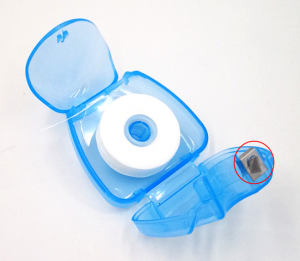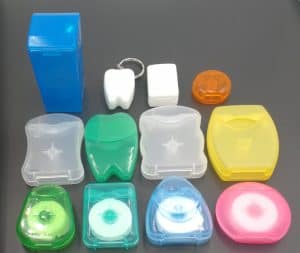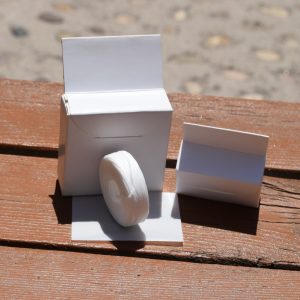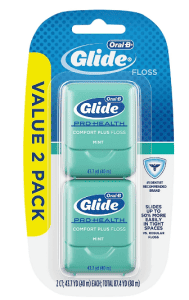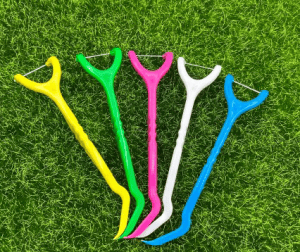Project Description
Bulk dental floss is a practical and cost-effective solution for maintaining good oral hygiene. Hebei Fenghe Biotechnology INC.,LTD is a professional dental floss manufacturer in China. Bulk dental floss export is available. Whether you’re a dental professional looking to stock your practice or an individual who wants to ensure a steady supply of floss at home, buying in bulk offers several advantages.
When purchasing bulk dental floss, it’s essential to consider the type of floss that best suits your needs. Options include traditional nylon floss, dental tape, floss picks, and even eco-friendly floss made from biodegradable materials.
Dental Floss Types
Using dental floss is a crucial part of maintaining good oral hygiene. Below is a step-by-step guide on how to use dental floss effectively:
What You’ll Need:
- Dental floss (waxed, unwaxed, flavored, or specialized, based on your preference)
- A clean piece of floss approximately 18 inches (45 cm) long
Steps to Use Dental Floss:
- Prepare the Floss:Cut a piece of dental floss about 18 inches (45 cm) long. This length should be enough for your entire mouth.
- Wrap Floss Around Your Fingers:Hold the floss between your thumbs and forefingers, leaving about 1-2 inches (2-5 cm) of floss in between. Wind the remaining floss around one of your middle fingers on each hand. Wind more on one finger than the other to collect used floss.
- Create Tension:Hold the floss tightly between your thumbs and forefingers. Keep about 1-2 inches (2-5 cm) of floss taut between your fingers for effective flossing.
- Insert the Floss:Gently slide the floss between two teeth, using a gentle sawing motion if needed. Be careful not to snap or force the floss into your gums, as this can cause injury.
- Curve the Floss:When the floss reaches the gumline, curve it around one of the teeth in a “C” shape. Slide the floss gently under the gumline. This helps remove plaque and debris from the space where your tooth meets your gum.
- Clean Both Sides:Clean both sides of the tooth by moving the floss up and down. Ensure that you cover the entire tooth surface and the space between the teeth.
- Move to a Clean Section:After cleaning one tooth, move to a clean section of the floss. Unwind the used floss from one finger and wind the clean portion onto the other finger.
- Repeat for Each Tooth:Repeat the process for all your teeth, using a clean section of floss for each pair of teeth. Be sure to floss both upper and lower teeth.
- Don’t Forget the Back Teeth:Pay special attention to your back teeth, which can be harder to reach. Use a fresh section of floss for each pair of teeth.
- Rinse Your Mouth:After flossing, rinse your mouth with water to remove dislodged debris and plaque.
- Dispose of Floss:Dispose of the used dental floss in a trash bin. Do not flush it down the toilet, as it can contribute to plumbing issues.
- Complete Your Oral Hygiene Routine:Finish your oral hygiene routine by brushing your teeth with toothpaste and rinsing with mouthwash if desired.
Dental floss is typically made from one of two main materials: nylon or Teflon (Polytetrafluoroethylene or PTFE). These materials are chosen for their strength, flexibility, and durability, which are essential for effective flossing.
For protecting our wold, the biodegradable dental floss such as PLA, silk, cotton and bamboo charcoal dental floss is comming.
Dental floss typically does not have a specific expiration date like food products, but it can degrade over time, affecting its effectiveness and usability. Some factors to consider regarding the shelf life of dental floss:
1. Material Degradation: Over time, dental floss made of nylon or PTFE (Teflon) can degrade due to exposure to air, moisture, and light. This can cause the floss to become less effective at removing plaque and debris between teeth.
2. Wax Coating: If your dental floss is waxed, the wax coating may wear off or degrade over time. This can impact the floss’s smoothness and ease of use.
3. Flavor and Aroma: If your dental floss is flavored, the flavor or aroma may diminish or change over time, but this does not necessarily mean the floss is no longer effective.
4. Packaging Integrity: The packaging of dental floss plays a significant role in its longevity. If the packaging becomes damaged, torn, or compromised, it can expose the floss to environmental factors that may shorten its shelf life.
5. Storage Conditions: Proper storage conditions can extend the usability of dental floss. Store dental floss in a cool, dry place, away from direct sunlight and humidity. Excessive heat or moisture can accelerate degradation.
While dental floss may not have a strict expiration date, it’s a good practice to check the condition of your dental floss before use. If you notice any of the following issues, it’s advisable to replace it:
- Frayed or damaged floss: If the floss is visibly frayed, torn, or damaged, it may not effectively clean between your teeth and could even break during use.
- Unusual odor or appearance: If the floss has an unusual odor or if it looks discolored or deteriorated, it’s best to discard it.
- Difficulty in use: If the floss feels rough, sticky, or does not glide smoothly between your teeth, it may have degraded and should be replaced.
To ensure effective oral hygiene, it’s a good habit to replace your dental floss regularly, even if it hasn’t reached a specific expiration date. Replacing it every 2 to 3 months or when you notice any of the above signs is a reasonable guideline to follow.
To find dental floss that is PFAS-free, consider the following tips:
- Check the Label: Look for dental floss products that explicitly state that they are “PFAS-free” or “free from per- and polyfluoroalkyl substances.” Manufacturers may include this information on the packaging or in the product description.
- Contact the Manufacturer: If you have concerns about a specific brand or product, you can reach out to the manufacturer directly to inquire about the presence of PFAS in their dental floss. Many companies are now responsive to consumer inquiries regarding PFAS content.
- Choose Natural Materials: Some dental floss brands use natural materials like silk or biodegradable materials, which are less likely to contain PFAS. Look for dental floss made from natural materials if you are concerned about PFAS exposure.

